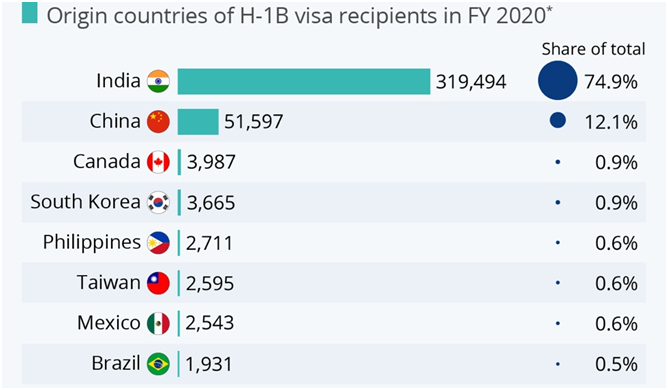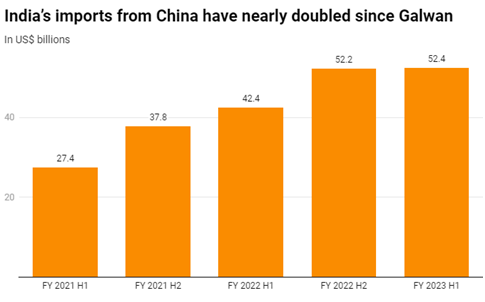Wednesday, 21st December 2022
Biodiversity Commitment - Edukemy Current Affairs
In News
At Convention on Biological Diversity (CBD), COP 15, countries resolved to take steps towards arresting the Great Extinction i.e. the existential threat that a million or more species face if urgent action is not taken.
About CBD-COP 15, Montreal:
- The three Rio Conventions UN Framework Convention on Climate Change (UNFCCC), Convention on Biological Diversity (CBD) and Convention on Combat Desertification (UNCCD) derive directly from the 1992 Earth Summit.
- The three environmental conventions seek to address the issues that overlap among them. Climate change is one of the main drivers of biodiversity loss, while changes in land and ocean use have an impact on climate change. Land degradation appears as a cause as well as an effect of both climate change and biodiversity loss.
- CBD has given rise to two ‘supplementary’ agreements
- Cartagena Protocol of 2003 on Biosafety seeks to protect biodiversity from genetically modified organisms by ensuring their safe handling, transport and use.
- The Nagoya Protocol of 2014 on Access and Benefit Sharing which deals with the commercial utilization of biological and genetic resources, for example, by pharma companies.
- The Montreal Conference has delivered a new agreement called the Global Biodiversity Framework (GBF), which contains four goals and 23 targets that need to be achieved by 2030.
What are the key goals and target areas agreed upon under GBF?
1. The key aspects of the four GBF goals for 2050 deal with
-
- maintaining ecosystem integrity and health to halt extinctions,
- measuring and valuing ecosystem services provided by biodiversity,
- sharing monetary and non-monetary gains from genetic resources and digital sequencing of genetic resources with indigenous people and local communities,
- raising resources for all countries to close a biodiversity finance gap of an estimated $700 billion.
- 30×30 target is a commitment to protect at least 30 per cent of the world’s lands, oceans and coastal areas by 2030.
- A related commitment is to ensure that restoration activities would be started on at least 30 per cent of degraded land or marine ecosystems by 2030.
- Ensure that all natural ecosystems are either maintained, enhanced or restored “substantially”, with an overall increase in the area of natural ecosystems by 2050.
- Ensure a ten-fold reduction in the extinction rate of species, currently estimated to be tens to hundreds of times higher than the average of the last 10 million years
- Among the other 2030 targets is a commitment to reduce global food wastage by half, reduce the risk of pesticides and other chemicals by half, and cut at least US$ 500 billion every year from subsidies that harm biodiversity.
- Signatories aim to ensure $200 billion per year is channelled to conservation initiatives, from public and private sources
What are the challenges in protecting biodiversity?
- The GBF is just a replacement for Aichi targets for 2010-2020 and a recent report showed that none of the Aichi targets was achieved at the end of the decade.
- A major challenge will be in the implementation of plans and ensuring desired outcomes.
- The use of GDP as the chief determinant of development is another roadblock which excludes the “depreciation of assets” like nature which is degraded by the relentless extraction of resources.
Source:
https://www.cbd.int/article/cop15-cbd-press-release-final-19dec2022
Click the link below to attempt the daily MCQs and the Mains based questions.
Fog in Delhi - Edukemy Current Affairs
Why in news?
- For two consecutive mornings, dense fog has enveloped north-western India, including Delhi, Punjab, Haryana, parts of Uttar Pradesh, and parts of Rajasthan.
- The fog episodes, which follow a comparatively warm start to the winter, are likely to recur over the Indo Gangetic Plain for the next three days, keeping visibility poor in the hours before and after daybreak.
|
How does Fog form?
|
What’s been happening over north-western India?
- Recently, Punjab, Haryana and parts of Rajasthan have experienced cold wave conditions, in which the minimum temperature is significantly lower than normal.
- Indo-Gangetic plain have experienced dense fog due to the fall in temperature along with moisture and light winds.
- Western disturbances, originating over the Mediterranean Sea bring moisture-bearing winds to northwest India, which results in increased moisture levels over the region.
- In the absence of western disturbances, local moisture sources like water vapour from rivers and soil moisture can also cause fog.
- The dense fogs over Indo Gangetic Plain are linked to wind and temperature patterns, mostly in the months of December and January.
Types of Fogs
- Radiation fog (or ground fog): These episodes last for a few mornings on account of calm winds and western disturbances, resulting in localised fog formation.
- Advection fog: These are larger in scale both in terms of the area covered and duration.
- Advection fog forms when warm, moist air passes over a cool surface, causing water vapour to condense.
- Advection fog mostly occurs where warm, tropical air meets cooler ocean water. If the wind blows in the right direction, sea fog can be transported over coastal land areas.
- Valley fog: It is the result of mountains preventing dense air from escaping, and in which the fog is trapped in the bowl of the valley and can last for several days.
- Freezing fog: These are the result of liquid droplets freezing on solid surfaces. Cloud-covered mountaintops often see freezing fog. These are not applicable to the Indo Gangetic Plain.
What is the link between pollution levels and fog?
- As temperature declines, local wind speed also falls. The inversion layer comes down and vertical mixing reduces.
- This results in fog formation and particulate matter hangs on the boundary layer, increasing pollution levels.
- Once the temperature increases during the day, the fog dissipates. This is the radiation fog, typically seen in Delhi.
Content Source Link:
https://indianexpress.com/article/explained/explained-climate/delhi-fog-phenomenon-causes-explained-8335273/
Click the link below to attempt the daily MCQs and the Mains based questions.
How natural gas is traded in Europe
In News:
- EU members agree on price capping of Natural Gas in a bid to temper market volatility
About the News:
- Gas prices in Europe have in recent years shifted away from oil indexation, which utilises crude oil as a price indication to hub pricing in which natural gas is priced based on demand and availability.
- However, in the aftermath of the Russian invasion and subsequent trade embargo, gas prices have increased energy costs and contributed to record-high inflation across Europe.
- In this regard, a gas price cap has been agreed upon by the energy ministers of the European Union in an effort to reduce dependence on Russia for the import of the majority of gas to Europe.
- The step is however feared to reduce liquidity on European exchanges and disincentivise much-needed liquefied gas exports to Europe from the United States and other regions.
Natural Gas trading in Europe:
- About: Natural gas is a mixture of gases which are found deep inside the earth near other solid & liquid hydrocarbon beds like coal and crude oil.
- Importance: These are rich in hydrocarbons and are processed and converted into cleaner fuel such as CNG, generating electricity, heat, boilers and air conditioners besides, being used for making fertilizers mainly ammonia.
- Mechanism: Gas trading in European markets is done through dedicated exchanges which are accessible to all market participants and provide transparency.
- Hub pricing: It is a mechanism which now accounts for 77% of gas volumes in Europe, natural gas is priced on the basis of demand and supply in this system.
- Oil indexation: In this system crude oil is a price indicator and now accounts for less than one-fourth of the trade volume of natural gas in Europe.
- Trading hubs: The major trading hubs in Europe includes the Dutch Title Transfer Facility (TTF) and Britain’s National Balancing Point (NBP) which together accounts for more than 90% of total traded volumes in Europe.
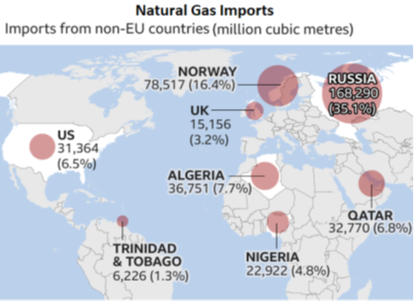
- Derivatives: There is no single price at the TTF or other gas hubs and the price is decided by instruments including gas contracts, futures, forwards, options and swaps.
- Futures: These are agreements to buy or sell gas for delivery at the TTF at a certain future time for a pre-agreed price and are traded on exchanges.
- Forwards: These are agreements to buy or sell TTF for delivery in the future but they tend to be bespoke agreements, are traded in OTC markets and are not formally classed as derivatives contracts under EU equity trading rules.
- Options: It gives the holder a right but not the obligation to buy or sell the underlying TTF futures contract at a certain date for a certain price.
- Swaps: These are OTC financially-settled contracts that allow two parties to exchange payments related to the market gas price.
- Over the counter: Trading in gas derivatives also take place bilaterally in which the counterparties have direct relationships with each other unlike the exchange trading in which a single centralised order book integrates all buyers and sellers at the same time.
Source:
https://indianexpress.com/article/explained/explained-global/how-natural-gas-traded-europe-8335254/
Click the link below to attempt the daily MCQs and the Mains based questions.
Bill to hike SC, ST quota: Reasons, provisions
In news
The Karnataka government has tabled a Bill in the Legislative Assembly to increase reservations for Scheduled Castes (from 15% to 17%) and Scheduled Tribes (from 3% to 7%) in the state.
About the Bill
- The Karnataka Scheduled Castes and Scheduled Tribes (Reservation of Seats in Educational Institutions and of Appointments or posts in the services under the state) bill, 2022 will replace the ordinance with the same title, which increased reservation for SCs from 15 to 17 per cent and for STs from 3 to 7 per cent, that was promulgated in October 2022.
- The government’s decision to table the Bill comes with Assembly polls due in 2023.
- The government has cited that while the number of Scheduled Castes has increased in the state as more groups were included within it, and the population of both communities has grown by leaps and bounds, the reservation has remained the same.
- Bill cites findings of the Justice HN Nagamohan Das Commission that recommended hiking SC/ST reservations, such as “evidence of social and educational backwardness that renders many of the [SC/ST] castes and communities marginalised”.
Criticisms
- The current decision takes the reservation tally in Karnataka to 56%, and the hike in the reservation will breach the 50% ceiling fixed by the Supreme Court in the 1992 Indra Sawhney case.
Reservation in India
- Reservation in India is all about reserving access to seats in government jobs, educational institutions, and even legislatures to certain sections of the population.
Purpose
- Advancement of Scheduled Castes (SC) and the Scheduled Tribes (ST) OR any socially and educationally backward classes of citizens (Eg: OBC) OR economically weaker sections (EWS) in accordance with Article 15 (4), Article 15 (5), and Article 15 (6).
- Adequate representation of any backward class of citizens OR economically weaker sections (EWS) in the services under the State. - Article 16 (4) and Article 16 (6).
- In India, reservation is provided in:
- Government Educational Institutions like IITs, IIMs etc as per Article 15 - (4), (5), and (6)
- Government Jobs as per Article 16 - (4) and (6)
- Legislatures (Parliament, and State Legislature) - as per Article 334
About SC/ST reservation
- The objective of providing reservations to the Scheduled Castes(SCs), and Scheduled Tribes (STs) aims at empowering them and ensuring their participation in the decision-making process of the State.
- It is also intended to end practices such as untouchability.
- Reservations are provided not only with respect to direct recruitment but also with respect to promotions for SC/ST category Article 16(4A).
- There is no concept of a 'creamy layer' with respect to SC/ST reservation, which means that irrespective of the income status or the government posts held by the parents, children of SC/ST parents will get SC/ST Reservations.
Source
Karnataka brings in Bill to hike SC, ST quota: Reasons, provisions
Image source
https://lawtimesjournal.in/wp-content/uploads/2018/11/An-analysis-of-reservation-in-India.jpeg?ezimgfmt=ngcb4/notWebP
http://indpaedia.com/ind/images/3/33/The_state_of_reservations_in_India_in_2019_June.jpg
Click the link below to attempt the daily MCQs and the Mains based questions.
Black carbon - Edukemy Current Affairs
- Context: Black carbon, or soot, is part of fine particulate air pollution (PM5) and contributes to climate change.
- Black carbon is formed by the incomplete combustion of fossil fuels, wood and other fuels.
- As combustion is never complete, CO2, carbon monoxide, volatile organic compounds, and organic carbon and black carbon particles are all formed in the process. The complex mixture of particulate matter resulting from incomplete combustion is often referred to as
- Black carbon is a short-lived climate pollutant with a lifetime of only days to weeks after release in the
- Black carbon can have significant direct and indirect impacts on the climate, the cryosphere (snow and ice), agriculture and human health.
- When deposited on ice and snow, black carbon and co-emitted particles reduce surface albedo (the ability to reflect sunlight) and heat the surface. The Arctic and glaciated regions such as the Himalayas are particularly vulnerable to melting as a result.
- Black carbon can affect the health of ecosystems in several ways:
- by depositing on plant leaves and increasing their temperature,
- dimming sunlight that reaches the earth, and
- modifying rainfall patterns.
Sources:
https://pib.gov.in/PressReleaseIframePage.aspx?PRID=1884766
https://www.ccacoalition.org/en/slcps/black-carbon
Click the link below to attempt the daily MCQs and the Mains based questions.
Submarine Vagir - Edukemy Current Affairs
- Context: The Indian Navy on Tuesday received the fifth scorpene-class submarine Vagir, built under Project 75.
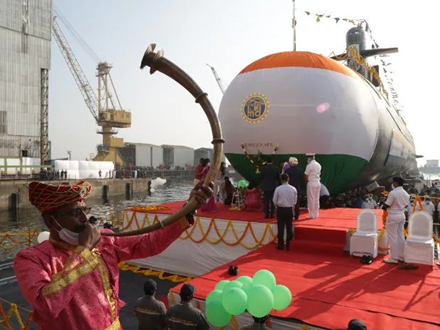
- Launched at sea in November 2020, Vagir, a Kalvari class submarine, commenced sea trials in February 2022, has finished weapon and sensor trials, and has been faster than any previous submarine.
- In all, six submarines of the Kalvari class, based on the Scorpene design of the Naval Group of France, are being constructed at the MDL in collaboration with the Naval Group of France.
- Kalvari-class diesel-electric attack submarines have been constructed with technology transfer under a programme called Project 75.
- These submarines are capable of anti-surface warfare, anti-submarine warfare, long-range strikes, special operations and intelligence gathering.
- The first of the Kalvari class was commissioned into the Navy in December 2017. Vagir is the fifth while the sixth and last submarine, Vagsheer, is undergoing sea trials and is likely to be delivered next year.
- India is also pursuing a project, P-75I, to build six more advanced submarines in the country under the government’s strategic partnership model.
- India has already built the indigenous stealth-guided missile destroyer Visakhapatnam and it is the first warship of the navy’s Project-15B under which three more warships are to be delivered by 2025.
Sources
https://timesofindia.indiatimes.com/india/navy-gets-5th-scorpene-class-submarine-vagir-all-you-need-to-know/articleshow/96376610.cms?from=mdr
https://www.hindustantimes.com/cities/delhi-news/sixth-submarine-of-kalvari-class-launched-enters-service-in-2-yrs-101650480467814.html
Image source:
https://www.business-standard.com/article/current-affairs/in-pics-navy-s-fifth-scorpene-class-submarine-vagir-launched-120111201012_1.html
Click the link below to attempt the daily MCQs and the Mains based questions.
Interstate Border Dispute - Edukemy Current Affairs
- Context: Recently interstate border dispute flared up between Maharashtra and Karnataka.
- The Constitution of India has following mechanisms for the settlement of Inter-State disputes:

- Article 3: The Parliament has the power to alter the border of any State.
- Article 131: It creates a judicial mechanism for dealing with Inter-State Disputes. The Supreme Court has original Jurisdiction to adjudicate any dispute between two and more States which means that it also includes Inter-State Border Disputes.
- In case of disputes relating to waters, Article 262 provides: Parliament may by law provide for the adjudication of any dispute or complaint with respect to the use, distribution or control of the waters of, or in, any inter-State River or river valley.
- Article 263: It states the provision for the formation of an Inter-State Council. The President has been conferred the power to create an Inter-State Council for inquiring into and advising upon disputes between States.
Source:
https://www.thehindu.com/opinion/editorial/fluid-boundaries-on-border-dispute-between-karnataka-and-maharashtra/article66285568.ece/amp/
Click the link below to attempt the daily MCQs and the Mains based questions.
Tentative UNESCO Heritage List
- Context: Sun Temple at Modhera, historic Vadnagar town in Gujarat and rock-cut relief sculptures of Unakoti in Tripura have been added to the tentative list of UNESCO world heritage sites.
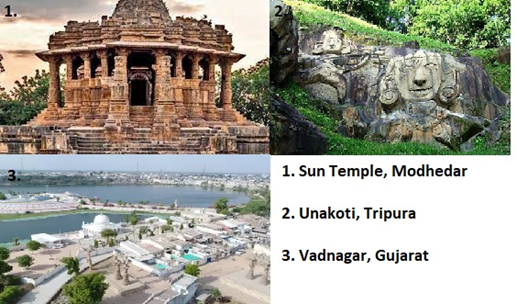
- Sun Temple, Modhera
- It is located on the left bank of the river Pushpavati, a tributary of river Rupan in Becharaji taluka of Mehsana district.
- It is built in Maru-gurjara architectural style.
- It consists of the main temple shrine (garbhagriha), a hall (gadhamandapa), an outer hall or assembly hall (Sabhamandapa or rangamandapa) and a sacred pool (Kunda), called Ramakunda.
- This east-facing temple is built with bright yellow sandstone.
- Vadnagar is a historic town with habitation for more than 2,700 years.
- Features:
- Early historic fortified settlement (2nd BCE)
- hinterland port
- centre for industries of Indo-Pacific shells and marine beads indicates a significant junction on trade routes and mercantile town
- religious centre/temple town
- palaeo-seismic evidence
3. Unakoti: literally means ‘one less to one crore’.
- Shaiva pilgrimage site dedicated to Lord Shiva and dates back to 7th-9th
- features magnificent rock carvings, waterfalls, and beautiful murals.
- The UNESCO website describes a tentative list as an "inventory of those properties which each State Party intends to consider for nomination".
Source:
https://indianexpress.com/article/cities/ahmedabad/sun-temple-modhera-vadnagar-town-unesco-heritage-sites-asi-8335275/
Click the link below to attempt the daily MCQs and the Mains based questions.
Anti-Cancer mRNA Vaccine - Edukemy Current Affairs
Why in news? Recently, the results of a trial of the messenger Ribonucleic Acid (mRNA-4157/V940) vaccine were made by Moderna and MSD (Merck & Co.)
About
- It is a personalised cancer vaccinee., tailor-made for every patient. To build the vaccine, researchers took samples of patients’ tumours and healthy tissue.
- After analysing the samples to decode their genetic sequence and isolate mutant proteins associated only with cancer, that information was used to design the vaccine.
- mRNA vaccines use mRNA to teach our cells how to make a protein that triggers an immune response inside our bodies.
- The personalised cancer vaccine works in concert with Keytruda, to disable a protein called Programmed Death 1 (PD-1), which helps tumours to evade the immune system.
https://www.thehindu.com/sci-tech/health/explained-how-can-mrna-vaccines-help-fight-cancer/article66275751.ece
Click the link below to attempt the daily MCQs and the Mains based questions.
DMF Scheme - Edukemy Current Affairs
Why in news? Odisha’s Keonjhar district is India’s highest recipient of funds under the District Mineral Foundation (DMF) scheme
About
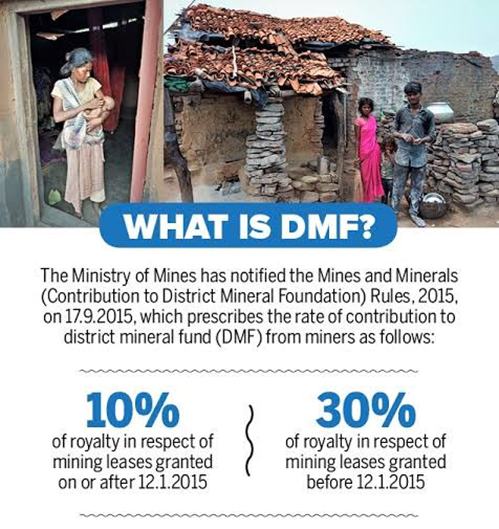
- As per the Mine and Minerals Development Regulation (Amendment) Act, 2015, in every district affected by mining-related operations, the state government shall, by notification, establish a trust as a non-profit body to be called the District Mineral Foundation.
DMF Funds:
- Funds every mining leaseholder will pay a fraction of royalty, not exceeding one-third of the royalty, to the DMF as per rates prescribed by Central Government.
- This fund will be used for the welfare of the people affected in the mining-affected areas.
- The functioning of the DMF trusts and the fund use governed by states’ DMF Rules incorporate the mandates of a central guideline, Pradhan Mantri Khanij Kshetra Kalyan Yojana (PMKKKY).
https://www.thehindu.com/news/national/odishas-keonjhar-district-finalises-beneficiaries-7-years-after-district-mineral-foundation-scheme-began/article66275118.ece
Click the link below to attempt the daily MCQs and the Mains based questions.
Center Challenges Coastal States' Purse Seine Fishing Ban
Why in news? Ban imposed by coastal States on purse seine fishing not justified, Centre tells SC
About

- Purse seine fishing is a mode of fishing that involves the use of a wide net to draw in not only the targeted fish but also endangered species such as turtles.
- Purse seines (fishing employing a fishing net) are used in the open ocean to target dense schools of single-species pelagic (midwater) fish like tuna and mackerel.
- A vertical net ‘curtain’ is used to surround the school of fish, the bottom of which is then drawn together to enclose the fish.
- The main species fished with purse seine gear are southern bluefin tuna, Australian sardine, blue mackerel and jack mackerel.
https://www.thehindu.com/news/national/ban-by-coastal-states-on-purse-seine-fishing-not-justified-centre-tells-sc/article66282729.ece
Click the link below to attempt the daily MCQs and the Mains based questions.
Salami Slicing tactic or Cabbage strategy
Why in news? Recently, Chinese PLA troops target Yangtse, one of 25 contested areas.
About

- In military terms, salami slicing is described as a strategy that involves the divide and conquer process of threats and alliances to overcome opposition and acquire new territories.
- It is a series of many small actions, often performed by clandestine means, that as an accumulated whole produce a much larger action or result that would be difficult or unlawful to perform all at once.
- In the context of China, salami slicing denotes its strategy of territorial expansion in the South China Sea and the Himalayan regions.
https://www.indiatoday.in/india/story/doklam-china-salami-slicing-army-chief-general-bipin-rawat-1039864-2017-09-07
Click the link below to attempt the daily MCQs and the Mains based questions.
Anti- Maritime Piracy Bill - Edukemy Current Affairs
Why in news? Recently, Lok Sabha passed the Anti-Maritime piracy bill, 2019.
About
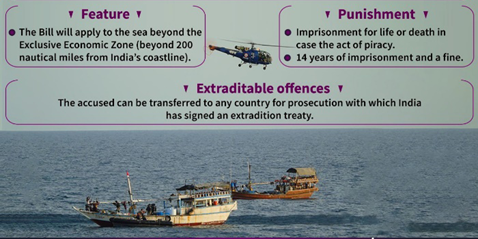
- The Bill enables Indian authorities to take action against piracy in the high seas. It applies to the sea beyond the Exclusive Economic Zone (EEZ), which is beyond 200 nautical miles from India’s coastline.
- The Bill defines piracy as any illegal act of violence, detention or destruction against a ship, aircraft, person or property, for private purposes, by the crew or passengers of a private ship or aircraft.
- Piracy also includes inciting and intentionally facilitating such acts of violence, and voluntarily participating in the operation of a pirate ship or aircraft.
https://newsonair.gov.in/News?title=Lok-Sabha-passes-Anti-Maritime-piracy-bill-2019&id=452596#:~:text=Lok%20Sabha%20today%20passed%20the,nautical%20miles%20from%20India's%20coastline
Click the link below to attempt the daily MCQs and the Mains based questions.
SERB and SERB TETRA Funds - Edukemy Current Affairs
Why in news? Researchers at IISc, Bangalore have developed germ-destroying air filters which can inactivate 99.24% germs using ingredients like polyphenols and polycationic polymers.
About

- It was funded by SERB (Science and Engineering Research Board) and SERB-Technology Translation Awards (SERB-TETRA) Funds.
- SERB is a statutory body established under SERB Act, 2008 to:
- Promote basic research in emerging areas of Science and Engineering, and
- Provide financial assistance to persons engaged in such research, academic institutions, industrial concerns and other agencies.
https://www.thehindu.com/sci-tech/science/iisc-bangalore-develops-green-tech-to-rid-air-filters-of-germs/article66284835.ece#:~:text=The%20antimicrobial%20air%20filters%20were,%2D2%20(delta%20variant).&text=A%20newly%20developed%20air%20filtering,said%20in%20an%20official%20statement
Click the link below to attempt the daily MCQs and the Mains based questions.
Enhancing CSR for Rural Livelihoods: HT
Exam View: Corporate Social Responsibility (CSR), Section 135 of the Companies Act, 2013, Hunger, Poverty and Malnutrition, Environmental Sustainability, Clean Ganga Fund, Non-governmental Organisations (NGOs), Artificial Intelligence, Machine Learning, Circular Economy.
In News: The greatest contribution of corporations to lives and livelihoods is in direct and indirect job creation.
In developing economies like India, Corporate Social Responsibility (CSR) is seen as part of corporate philanthropy in which corporations augment the social development to support the initiatives of the government.
And in keeping with the Indian tradition, it was believed that every company has a moral responsibility to play an active role in discharging the social obligations. In the early 20th century Mahatma Gandhi introduced the concept of trusteeship helping socio-economic growth.
India became the first country to legislate the need to undertake CSR activities and mandatorily report CSR initiatives under Section 135 of the Companies Act, 2013. But current CSR frameworks have some flaws, such as transparency, lack of community participation in CSR activities, and lack of timely audits.
In order to achieve sustainable development, India should streamline its CSR framework and focus on collective betterment through shared responsibility.
|
Companies Fall Under the Purview of Corporate Social Responsibility |
|
Activities Included under CSR Category
- Eradicating hunger, poverty and malnutrition, promoting health care including preventive healthcare and sanitation including contribution to the Swach Bharat Kosh set-up by the Central Government for the promotion of sanitation and making available safe drinking water.
- Promoting education, including special education and employment enhancing vocational skills especially among children, women, elderly and the differently abled and livelihood enhancement projects.
- Promoting gender equality, empowering women, setting up homes and hostels for women and orphans; setting up old age homes, day care centres and such other facilities for senior citizens and measures for reducing inequalities faced by socially and economically backward groups.
- Ensuring environmental sustainability, ecological balance, protection of flora and fauna, animal welfare, agroforestry, conservation of natural resources and maintaining quality of soil, air and water including contribution to the Clean Ganga Fund set-up by the Central Government for rejuvenation of river Ganga.
Challenges of CSR in India:
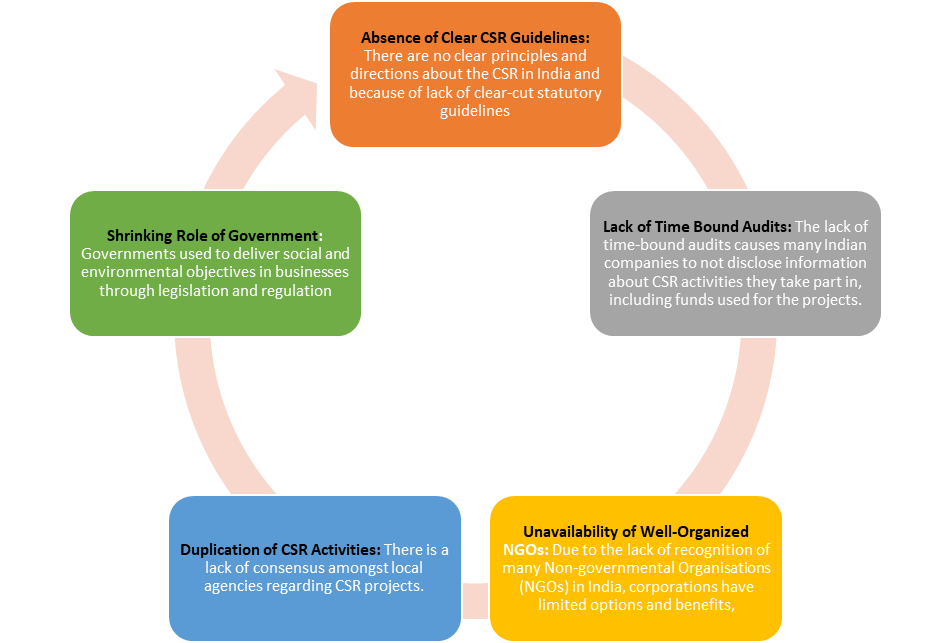
Way Forward
- Increasing Role of Government: Governments should also address the issue of non-availability of NGOs and raise awareness about the importance of CSR in society.
- SDG with CSR: With India prioritising and achieving Sustainable Development Goals, NITI Aayog has made this mainstream to the national agenda, and now is the time to tie CSR and SDGs together.
- Integrated CSR Interface: A national platform, centralised by the Ministry of Corporate Affairs, is needed where all states can list their possible CSR-admissible projects so that companies can determine where their CSR funds would have the most impact.
- Replacing End of Life Concept with CSR: Corporate social responsibility should replace end-of-life concepts for products with technologies and regulations that facilitate recycling and reusing.
- Regular CSR Compliance: Companies should conduct regular reviews of CSR compliance and put in place measures for a more professional approach. They should also set clear objectives and align all stakeholders with them.
- Linking CSR with Research Institutions: From Designing sustainable construction materials that are affordable and recyclable, to developing India-centric greening options like novel heat and power management systems.
https://www.hindustantimes.com/opinion/a-plan-for-better-csr-funds-to-boost-rural-livelihoods-101671371704719.html
Click the link below to attempt the daily MCQs and the Mains based questions.
Sacred Grooves: Oran Land - Edukemy Current Affairs
Background
Villagers of Jaisalmer, Rajasthan marched 225 kilometres to protect community-conserved sacred spaces known as ‘orans’, which are currently classified as wastelands.

About Orans:
- Orans are community-conserved sacred spaces, which are rich in biodiversity and usually include a water body.
- Orans are also spaces where herders take their livestock for grazing and are places for communal congregations, festivals, and other social events, the performance of which is linked to agrarian rhythms and the continued commitment of the communities towards environmental conservation.
- They are among the last natural habitats of the Great Indian Bustard.
- The locals consider Orans as scared groves, i.e. a piece of natural vegetation that is protected by a certain community due to religious reasons. They are barred from cutting and felling trees due to spiritual and religious connections to the orans.
What is the concern regarding Orans?
- The current categorization of Orans as wasteland is causing a loss of biodiversity and is affecting the livelihood of the locals in the area, as huge chunks of land are being allotted for setting up solar plants.
- The open stretch of land, which receives long hours of sunlight and brisk winds, has become a hub of green energy with windmills and solar photovoltaic dotting it.
- Animal husbandry has been the chief occupation of locals. Their pastures are located in these Oran areas which are being allocated for solar projects, thus affecting their livelihood.
Source:
https://www.downtoearth.org.in/news/wildlife-biodiversity/jaisalmer-villagers-march-225-kilometres-to-get-sacred-groves-listed-as-oran-land--86653
Click the link below to attempt the daily MCQs and the Mains based questions.
Share the article
Get Latest Updates on Offers, Event dates, and free Mentorship sessions.

Get in touch with our Expert Academic Counsellors 👋
FAQs
UPSC Daily Current Affairs focuses on learning current events on a daily basis. An aspirant needs to study regular and updated information about current events, news, and relevant topics that are important for UPSC aspirants. It covers national and international affairs, government policies, socio-economic issues, science and technology advancements, and more.
UPSC Daily Current Affairs provides aspirants with a concise and comprehensive overview of the latest happenings and developments across various fields. It helps aspirants stay updated with current affairs and provides them with valuable insights and analysis, which are essential for answering questions in the UPSC examinations. It enhances their knowledge, analytical skills, and ability to connect current affairs with the UPSC syllabus.
UPSC Daily Current Affairs covers a wide range of topics, including politics, economics, science and technology, environment, social issues, governance, international relations, and more. It offers news summaries, in-depth analyses, editorials, opinion pieces, and relevant study materials. It also provides practice questions and quizzes to help aspirants test their understanding of current affairs.
Edukemy's UPSC Daily Current Affairs can be accessed through:
- UPSC Daily Current Affairs can be accessed through Current Affairs tab at the top of the Main Page of Edukemy.
- Edukemy Mobile app: The Daily Current Affairs can also be access through Edukemy Mobile App.
- Social media: Follow Edukemy’s official social media accounts or pages that provide UPSC Daily Current Affairs updates, including Facebook, Twitter, or Telegram channels.


